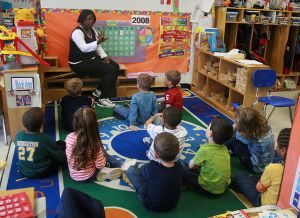There are different types of behaviour that children can display and sometimes it can be hard to manage, especially if a child is having behavioural issues. This article will help you to develop a behaviour management plan which can be used during the hard times.
The aim of the behaviour management plan is to develop strategies that can be taken to support the child’s behaviour. Before developing the plan, evidence is required on the individual child. Once this information is collected, this can be used to formulate the plan. Some of the evidence includes:
- Observations of the child’s behaviour (events leading up to the behaviour, how it occurs etc. how it ends etc.)
- Input gathered through discussions with parents
- Background information on the child (enrolment forms, family feedback forms etc.)
The reason for collecting this evidence is to make well informed choices on the actions that needs to be taken. Only then the situation can be dealt with positively and effectively.
The Behaviour Management Plan
There is no exact way that the plan needs to be laid out however it will usually covers the same areas. On the behaviour management plan, the following areas will be covered:
- Name of Child
- Age
- Date - start and end of plan
- Child’s Background – family structure, culture, additional needs, family information, health issues, developmental delays, etc.
- Behavioural Indicators – record specific behaviours (from what you have noted in the obs). . Detailed information should be provided on what exactly you see.
- Antecedent Events – triggers causing child’s behaviour
- Prioritize Behaviour – when a child is showing different types of behaviour (kicking, biting etc.) you need to prioritise which one is most harmful to the least so you can act on it first.
- Intervention – how you want to change the child’s behaviour
- Strategies - detail the exact strategies you're going to use to deal with child’s misbehaviour. You can also detail whether the strategy involves other children, the child's family or other staff.
- Support - support needed from people, professional support services (if needed)
- Aims – detail specific acceptable behaviour that you are aiming for.
- Monitoring Behaviour – identify how you’re going to monitor behaviour (obs, photos etc.). Keep records of changes in the behaviour which specifies how behaviour is changing. You could add the date to the records here to keep track of when each record was taken.
- Evaluation – Evaluate how well the pan went and add any changes that have taken place in each of the areas and any follow up that is required.
Completing the Plan
When managing a child’s difficult behaviour there needs to be consistency and trust between the service and home. It’s important that the parents have input and agree with the strategies that will occur. Not only will the staff read this behaviour plan but so will the parents. Make sure that the plan is positive and objective (you write what you see without personal opinions or thoughts). For example:
- Behavioural Indicators – yelling, kicking, screaming, hitting, punching, throwing objects, etc.
- Antecedent Events – fatigue, frustration with task, asked to put toys away during play, etc.
- Prioritize Behaviour – 1. Swearing 2. Kicking 3. Hitting 4. Scratching 5. Biting (biting is highest as it causes it causes more harm)
- Intervention – directions given as a choice (“you can sit near me or with Helen”), positive feedback of others (“Harry is putting the blocks away. Good job, he’ll be ready for lunch soon”), give reminders of transitions (“time to pack away in 5 minutes”), reinforce positive behaviour (“you’re sitting quietly, good job”)
- Strategies – provide a quiet area to use when over stimulated, sitting near educator during group time, use picture cards for the daily routine, modify activities to suit needs etc.
- Aims - for Mary to stop biting others while reaching for a toy during play, for Layla to stop hitting during meal times etc.
Involving Parents
This plan cannot be developed without the knowledge and co-operation of the child’s parents. Ideas should be shared between the educator and parent in order to create a positive approach to dealing with this behaviour. The intervention and strategies mentioned in the plan should be implemented (where possible) in the home and service in order to create a supportive environment. Involving parents can include:
- Keep up to date with behaviour changes at home and service through email or meetings
- Behaviour sticker chart between home and the service
- Parents to be involved in excursions etc.
- Misbehaviour will be handled as it occurs, Parents to be encouraged not to dwell on it
- Focus on the positives that occur throughout the day
When the behaviour plan is completed, a meeting should be set up with parents to discuss it. During this time once the plan has been agreed upon parents should sign it.
A behaviour management plan should only be used when all other means have been exhausted and the behaviour that is being displayed is serious. An effective plan needs to be put into place in order to sufficiently deal with this concern.




 As an Educator in Australia, your pay rate falls under the Children’s Services Award 2010. This award states the minimum amount that an employer can
As an Educator in Australia, your pay rate falls under the Children’s Services Award 2010. This award states the minimum amount that an employer can When working as a qualified Early Childhood Teacher (with a university degree) within a service, your rate of pay will come from the Educational Services
When working as a qualified Early Childhood Teacher (with a university degree) within a service, your rate of pay will come from the Educational Services When working as a Diploma Qualified Educator your pay rate is from the Children's Services Award 2010. This Award states your minimum rate of pay
When working as a Diploma Qualified Educator your pay rate is from the Children's Services Award 2010. This Award states your minimum rate of pay When working as a Cert 3 Qualified Educator, your pay rate is from the Children's Services Award 2010. This Award states your minimum rate of
When working as a Cert 3 Qualified Educator, your pay rate is from the Children's Services Award 2010. This Award states your minimum rate of Educational Leaders play a crucial role in their early childhood service by ensuring that the educational program aligns with best practices and supports the holistic
Educational Leaders play a crucial role in their early childhood service by ensuring that the educational program aligns with best practices and supports the holistic In early childhood education and care, ratios are more than a technicality—they are a frontline safeguard. Every child deserves responsive supervision, emotional connection, and developmental
In early childhood education and care, ratios are more than a technicality—they are a frontline safeguard. Every child deserves responsive supervision, emotional connection, and developmental With the new national child safety reforms kicking in on 1 September 2025, early childhood services like yours have a real opportunity to lead the
With the new national child safety reforms kicking in on 1 September 2025, early childhood services like yours have a real opportunity to lead the Here’s a comprehensive Mobile Phone and Smart Watch Policy tailored for early childhood education and care (ECEC) services in Australia, aligned with the latest 2025
Here’s a comprehensive Mobile Phone and Smart Watch Policy tailored for early childhood education and care (ECEC) services in Australia, aligned with the latest 2025 The Sea of Fish Challenge is a national initiative that invites children, educators, families, and communities to create and display fish artworks as a symbol
The Sea of Fish Challenge is a national initiative that invites children, educators, families, and communities to create and display fish artworks as a symbol Across the early childhood education and care sector, educators are sounding the alarm: current staffing ratios are insufficient to deliver safe, meaningful, and developmentally appropriate
Across the early childhood education and care sector, educators are sounding the alarm: current staffing ratios are insufficient to deliver safe, meaningful, and developmentally appropriate


